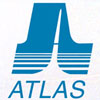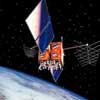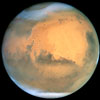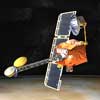|
Sunday:
July 8, 2001 | |
0541 GMT |
 |
NASA, Boeing dispute major TDRS problem
NASA's new $200-million Boeing Satellite Systems TDRS-H tracking and data relay satellite has malfunctioned in geosynchronous orbit. As a result, upgrades to the critical TDRS relay constellation are being delayed and, to date, NASA has refused to take ownership of the platform from the contractor.
 FULL STORY FULL STORY
 |  |

|
 |
ILS beats Ariane, Boeing on first EELV
International Launch Services and Eutelsat are completing arrangements for the launch of a European Eutelsat spacecraft on the first flight of the Lockheed Martin Atlas V in May 2002.
 FULL STORY FULL STORY
 |  |

|
 |
|
Saturday:
July 7, 2001 | |
0308 GMT |
 |
Chandra views Vela pulsar
In this wide-angle view, the Vela pulsar and its pulsar wind nebula are seen against a background of clouds, or filaments, of multi-million degree Celsius gas. These clouds are part of a huge sphere of hot expanding gas produced by the supernova explosion associated with the creation of the Vela pulsar about 10,000 years ago.
 FULL STORY FULL STORY
 |  |

|
 |
System would harness GPS to study environment
Engineers at Purdue University and NASA have developed a new technique for monitoring the environment by using routine signals that already are being beamed to Earth by global positioning systems.
 FULL STORY FULL STORY
 |  |

|
 |
|
Friday:
July 6, 2001 | |
0221 GMT |
 |
Our galaxy's sister is a cannibal, astronomers say
The large spiral galaxy called Andromeda is devouring a couple of small neighbouring dwarf galaxies, astronomers report. The evidence of galactic dismemberment is a stream of stars on the outskirts of Andromeda that appears to have been stripped from two dwarf galaxies by their larger companion.
 FULL STORY FULL STORY
 |  |

|
 |
First space station plants, seeds headed to Earth
The Expedition Two crew continued to prepare the first plants and seeds produced on the International Space Station for their return trip on shuttle Atlantis set to visit the orbiting laboratory next week. The plants are the first to successfully go through germination, growth and seed development aboard the station.
 FULL STORY FULL STORY
 |  |

|
 |
Sounds of a star
Sound waves running through a star can help astronomers reveal its inner properties. In the case of our Sun, such waves have greatly improved our knowledge about what is going on inside. However, because they are much fainter, it has turned out to be very difficult to detect similar waves in other stars. But now waves have been detected in a solar-twin star.
 FULL STORY FULL STORY
 |  |

|
 |
DAILY BRIEFING Other stories making news today
|
 |
How fast does the world turn? -- A discovery that may someday help measure how clouds and earthquakes change Earth's rotation has come from an experiment that made friction-free helium whistle.
|
 |
|
Thursday:
July 5, 2001 | |
1500 GMT |
 |
Hubble captures best view of Mars obtained from Earth
Frosty white water ice clouds and swirling orange dust storms above a vivid rusty landscape reveal Mars as a dynamic planet in this sharpest view ever obtained by an Earth-based telescope.
 FULL STORY FULL STORY
 |  |

|
 |
Rapid heartbeat in Andromeda yields discovery
There are many kinds of celestial objects in the Universe but we are far from knowing them all. XMM-Newton may have discovered a new one: a very luminous soft X-ray source that is pulsating extremely rapidly in the central region of the Andromeda galaxy. This unusual object could be a new kind of accreting white dwarf.
 FULL STORY FULL STORY
 |  |

|
 |
'Star Wars' cryo tank gets new life with NASA
A multi-million-dollar cryogenic chamber, erected as part of Air Force research for President Reagan's 1980s Strategic Defense Initiative, will soon be helping NASA develop space science capabilities for the 21st century.
 FULL STORY FULL STORY
 |  |

|
 |
|
Wednesday:
July 4, 2001 | |
0414 GMT |
 |
Eating right for long-duration space missions
A study released of astronauts who lived aboard the Russian space station Mir, and counterparts living in seclusion on Earth, has validated a tool for measuring astronauts' dietary intake during long space flights.
 FULL STORY FULL STORY
 |  |

|
 |
NASA names crew to STS-111 space station mission
NASA has named three astronauts to the crew of space shuttle mission STS-111, scheduled to launch in 2002 to deliver a new International Space Station resident crew and a Canadian-built mobile base for the orbiting outpost's robotic arm. STS-111 is also the second space shuttle mission dedicated to delivering research equipment to the space platform.
 FULL STORY FULL STORY
 |  |

|
 |
Eutelsat sets new course as a private company
The assets and activities of the European Telecommunications Satellite intergovernmental organization were transferred on July 2 into Eutelsat S.A., a limited liability company headquartered in Paris. This establishes Eutelsat on a level playing field for furthering its expansion in the global telecommunications market.
 FULL STORY FULL STORY
 |  |

|
 |
|
Tuesday:
July 3, 2001 | |
0250 GMT |
 |
Astronomers discover giant Kuiper Belt object
Astronomers announced Monday that they have discovered an object in the distant Kuiper Belt that could rival Pluto's moon in size. The discovery of is more ammunition in the debate regarding the classification of Pluto, the smallest and most distant planet.
 FULL STORY FULL STORY
 NEWS RELEASE ANNOUNCING DISCOVERY NEWS RELEASE ANNOUNCING DISCOVERY
 |  |

|
 |
Shuttle launch pads filled for summer station missions
For the first time in 18 months both space shuttle launch pads at Kennedy Space Center are occupied following Monday's rollout of Discovery in preparation for blastoff in August on a mission to exchange the resident crew aboard the international space station. Discovery joins sistership Atlantis, which was rolled out June 21.
 FULL STORY FULL STORY
 |  |

|
 |
Mars-bound probe adjusts its trajectory
NASA's 2001 Mars Odyssey spacecraft fine-tuned its flight path on Monday for arrival at Mars in October as it performed its second trajectory correction maneuver, changing its velocity by about two miles per hour.
 FULL STORY FULL STORY
 |  |

|
 |
Brown dwarfs are stellar embryos evicted by siblings
Brown dwarfs, essentially stunted stars, were most likely ejected
from newborn, multiple-star systems before they had a chance to
accumulate enough mass to ignite the hydrogen in their interiors and
flower, according to a new study.
 FULL STORY FULL STORY
 |  |

|
 |
DAILY BRIEFING Other stories making news today
|
 |
Galileo in quiet cruise mode -- This holiday week sees the Galileo spacecraft continue its normal cruise activities. On Thursday, a standard test of the on-board gyroscopes is performed. Due to repeated dosages of the intense radiation near Jupiter, some of the electronic components used to report data from the gyros have degraded. These periodic tests check the current health of the electronics, and also determine if updates are needed to software parameters.
|
 |
|
Monday:
July 2, 2001 | |
0001 GMT |
 |
Orbital anomaly may have caused global Earth cooling
A rare coincidence of orbital cycles may have caused sudden global cooling 23 million years ago, according to scientists, who used high resolution records and new techniques that allow astronomical calibration to be extended much further back in time.
 FULL STORY FULL STORY
 |  |

|
 |
Giant 'eyeball' furthers mega-telescope concept
A satellite receiver that works like a giant eyeball has arrived in Sydney
for testing, bringing a step closer one idea for the world's next
'mega-telescope' -- an army of giant spheres to collect radio waves from
the cosmos, dotted in patches across the landscape.
 FULL STORY FULL STORY
 |  |

|
 |


 The Hubble Space Telescope's majestic view of the Eskimo Nebula. This spectacular poster is available now from the Astronomy Now Store.
The Hubble Space Telescope's majestic view of the Eskimo Nebula. This spectacular poster is available now from the Astronomy Now Store.